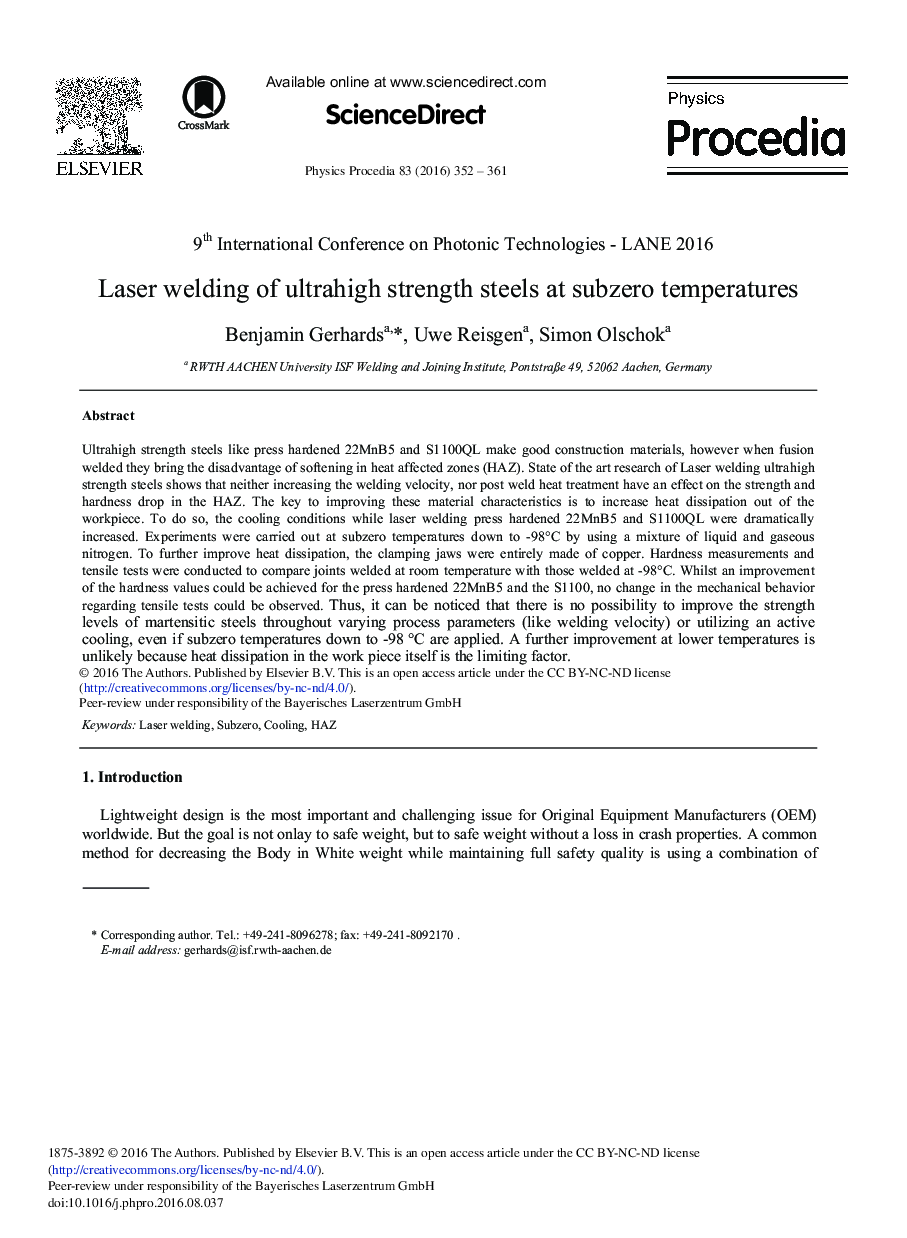| Article ID | Journal | Published Year | Pages | File Type |
|---|---|---|---|---|
| 5497368 | Physics Procedia | 2016 | 10 Pages |
Abstract
Ultrahigh strength steels like press hardened 22MnB5 and S1100QL make good construction materials, however when fusion welded they bring the disadvantage of softening in heat affected zones (HAZ). State of the art research of Laser welding ultrahigh strength steels shows that neither increasing the welding velocity, nor post weld heat treatment have an effect on the strength and hardness drop in the HAZ. The key to improving these material characteristics is to increase heat dissipation out of the workpiece. To do so, the cooling conditions while laser welding press hardened 22MnB5 and S1100QL were dramatically increased. Experiments were carried out at subzero temperatures down to -98°C by using a mixture of liquid and gaseous nitrogen. To further improve heat dissipation, the clamping jaws were entirely made of copper. Hardness measurements and tensile tests were conducted to compare joints welded at room temperature with those welded at -98°C. Whilst an improvement of the hardness values could be achieved for the press hardened 22MnB5 and the S1100, no change in the mechanical behavior regarding tensile tests could be observed. Thus, it can be noticed that there is no possibility to improve the strength levels of martensitic steels throughout varying process parameters (like welding velocity) or utilizing an active cooling, even if subzero temperatures down to -98°C are applied. A further improvement at lower temperatures is unlikely because heat dissipation in the work piece itself is the limiting factor.
Keywords
Related Topics
Physical Sciences and Engineering
Physics and Astronomy
Physics and Astronomy (General)
Authors
Benjamin Gerhards, Uwe Reisgen, Simon Olschok,
